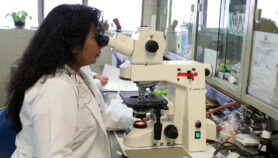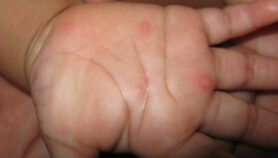By: Juan Casasbuenas and Bernard Appiah
Send to a friend
The details you provide on this page will not be used to send unsolicited email, and will not be sold to a 3rd party. See privacy policy.
Scientific research can be dense and complex, so it can be a daunting challenge to base a story on an original research paper.
-
Start with the press release
-
Reading the research paper
-
Enrich the story
-
Be responsible in reporting
-
Final check list
-
Useful links
Instead, it can be tempting to use a press release, take it at face value and leave it at that.
At best this can result in a generic story that many others outlets are already reporting. At worst this kind of ‘churnalism’ is damaging, allowing exaggerated claims to reach the wider public.
It takes time and effort to interrogate research findings, but you will end up with a richer, more honest story if you do. This practical guide provides you with advice on how to go beyond the abstract and press release. Following this advice will help you to find unique angles, bring a story to life, and report on science in a responsible way.
| You can use press releases as a starting point, to get some basic information such as contact details, initial story ideas and context. Here are a few things you should bear in mind when reading a press release | |
| Check for hyperbole | Press releases sometimes oversell or extrapolate results. Check the language — are they suggesting this is a ‘‘cure’’ or a ‘‘magic bullet’’? Is the release implying cause-and-effect when in fact the study revealed only an association? Are there claims that the findings are applicable to humans when the research suggests it’s too early to tell? Note these down and check whether they can be justified. |
| Check for context or lack thereof | A release might present research as being a huge leap in the field when most likely it is a small step forward. Is it the first study ever of its kind or does it build on previous work? At what stage of development is this field or technique? Do other studies have similar results or does this one contradict the status quo? |
| Don’t be misled | Press releases often fail to mention the circumstances under which, say, a new innovation might work. It might imply that a new technique works in the real world, when the original paper states it works only under controlled conditions. |
| Check image rights | Press releases sometimes use illustrations from stock graphics sites such as Flickr, which you may not have permission to use. Always double check. |
| You don’t need to read the paper from beginning to end, but instead look out for specific things in each section | |
| Title and abstract | These can be quite technical but will provide you with the first hint of what the researchers found, the scope of the work and so on. The last sentence of the abstract often states the main research finding. |
| Introduction |
The introduction usually puts the research into context, giving references to previous literature and other important players in the field who might be useful to contact. It begins to answer the ‘‘so what? ’’
It will also tell you what is already known in the field and therefore the gap the research addresses. |
| Discussion | This is where the authors will speculate on where the work is heading. They will also identify further work needed to answer the remaining questions. The limitations of the work will be highlighted here, as well as useful references that the authors use to justify their conclusions. |
| Methods | This section can be challenging to read, but here you can answer questions about the way the work was carried out. Was the drug tested on mice or humans? How many? Was the new device tested in the field or in controlled conditions? Does the technique use existing methods or an improved version? Is there something about the technique that raises questions for you? |
| Results |
Good papers will summarise results in reasonably readable figures and tables and lay out the finding in each experiment. It is possible you won’t fully grasp the statistics employed but pay attention to words such as ‘‘significant’’ and ‘‘non-significant‘‘.
Are there error bars on graphs? Why not? This section will also tell you the size of the sample. |
| Author list | In theory, this should include everyone who was involved in the research and willing to take responsibility for it. Usually, the earlier names in the list were highly involved, while the last name is the person in charge of the research group. The former can give you specific commentary on the work itself, while the latter is likely to have more experience of talking to journalists and putting the work into context. This can vary across disciplines though, for example alphabetical order is used in mathematics or in large physics research groups. |
| Where was the research carried out? | The fact that a particular city or country was involved in the research can be newsworthy in itself and might help you choose which outlet to pitch to. For example, SciDev.Net is interested in research carried out in developing countries. |
| Submission date | Note this down and compare it to the publication date. How much time has passed? The longer the time, the more likely there have been developments that you can ask the authors about. |
| Conflicts of interest | Authors have to declare where their funding came from, and whether they have any competing interests. It’s worth a quick look into these declared interests. For example, an author might have a financial link to a company that sponsored or will benefit from the work. |
| Once you’ve extracted key information from the paper, there is a lot you can do to bring the story to life | |
| Email then phone call | Get the contact details for the key authors of the paper. Send an email requesting a brief interview but follow-up with a phone call, especially in regions where email replies might be slow. |
| Make phone calls for quotes | People tend to talk more naturally over the phone and you are more likely to get quotable comments than over email. You might also get more revealing answers to difficult questions. |
| Ask if you don’t understand | Authors might use technical terms when explaining the findings of their work. Always ask if you don’t understand. Keep a list of terms from the paper that you want to ask about. |
| Balance it out | Ask someone working in the same field to comment on the findings. This is especially important for papers that are making big claims. Remember that you can get ideas for commenters in the introduction and discussion of the paper. |
| Local representation | If you are reporting on a story that affects a particular country or city, ensure those local voices are heard too. This advice is also applicable to local expertise. |
| Include visuals | Sometimes images/graphs might be released with the research or available on request. If not, you might want to create your own infographics or graphs based on the findings. This could make your piece particularly appealing on social media. Acknowledge the source of any visuals you used. |
| Suggest captions | Editors tend to write captions for any image accompanying an article. However, this doesn’t stop you from making suggestions, and it’s likely they’ll use your guidance to make sure that the text is relevant to the image. |
| Find the human angle |
In cases where the research has an end-user, such as a patient or farmer, consider getting a more human perspective by talking to someone who might be affected by the work.
Is it clear who the beneficiaries of this work would be? Are there people who could be negatively affected? Considering this will allow you to connect more effectively with your audience. |
| Serve your audience | Remember to consider your audience and outlet. How can you tailor the story to them? |
| Reveal the personal angle | Bringing out the personal side of research can make your story more interesting. Ask the scientists about their own experience of doing the research. Perhaps they were frustrated for years before making this discovery, or have tales to tell of being filled with wonder when they looked at their results. |
|
Some of these tips have been touched on already, but are worthy of their own section. Following this advice will help ensure you report fairly and transparently 1
|
|
| Fact-check with an expert | If possible, ask someone you trust to scan the study and tell you what they think. For example, are the paper’s conclusions hyperbolic? |
| Determine size and nature | If the study was tested on subjects, are the findings based on human trials? Or mice? Or in a test tube? How large were the sample sizes? Essentially, how directly can we apply the findings to the ultimate objective of the work? |
| Don’t report causality without evidence | Sometimes scientists will report associations or links between two things, but might not present conclusive evidence for causality. Researchers are usually careful about the language they use in this context, and the discussion section should shed light on this. |
| Assess the stage of the research | Sometimes exciting research can be decades away from impacting upon our lives. This doesn’t make it less exciting, but you should find out how close research is to having real-world applications. Is it a well-established field? Or a pioneering study? |
| Be accurate about the findings | If something is not a cure, don’t report it as such. If a technological innovation hasn’t been tested in the real world, then don’t present it in this way. |
| Suggest headlines | You might not have control over the headlines, but you can suggest some that accurately reflect the research. |
| Don’t extrapolate | A journal article’s discussion section might speculate on where the work is heading. It’ll be tempting to get excited about this, but be clear about what is known and what is not. |
| Deal carefully with risk and uncertainty |
How much certainty is there over the results? How does it compare to the wider body of evidence? To what degree are scientists sure about the findings?
Present risk and uncertainty using manageable numbers (like one in 100) and everyday examples (for example, ‘‘as likely as being struck by lightning’’). |
| You can use press releases as a starting point, to get some basic information such as contact details, initial story ideas and context. Here are a few things you should bear in mind when reading a press release | |
             |
What was the primary finding? |
             |
Who was involved? Who does it affect? Where did it take place? |
             |
Why does it matter? Why now? |
             |
How was the research conducted? Was there anything special about this? Any limitations? |
             |
Where does this sit in the bigger picture? |
             |
Have you spoken to a good range of people about it (including non-experts)? |
             |
Have you gone beyond the press release and interrogated the findings thoroughly? |
             |
Have you tailored the story to your audience? |
             |
Have you considered angles that others may have missed? |
             |
Were there any conflicts of interest, for example in the way the work was funded? |
             |
Have you reported responsibly, giving an accurate depiction of the findings? |
             |
Where did you find your story? Include bibliographical details if possible. |
-
Useful links:
-
Free online course in science journalism from the WFSJ and SciDev.Net
Includes a section on finding and judging science stories -
Advice from Thomas Hayden for journalists
How to read a journal article when writing a science story -
Science Media Centre best-practice guidelines for journalists
How to report on science and health -
Compass Blogs interview with science journalists
Experienced science journalists comment on press releases -
Science: conventions on scientific authorship
A guide from Science that will help you to navigate author lists in a paper
Bernard Appiah is regional sub editor for the Sub-Saharan Africa English edition. @bernappiah
Juan Casasbuenas is the SciDev.Net training coordinator. @jdcasasbuenas
This article was produced by SciDev.Net's Global Edition.



















